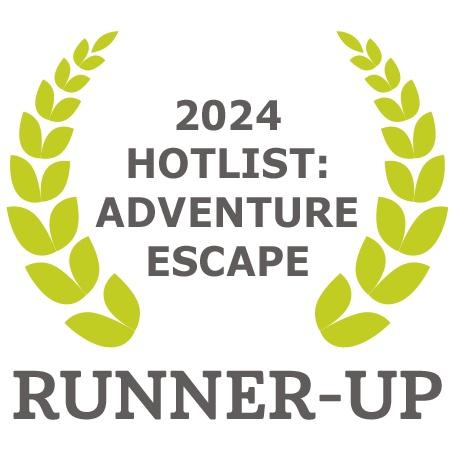Thonga Beach Lodge
iSimangaliso Wetland Park, Kwazulu Natal, South Africa

This is surely one of the most spectacular and unique beach lodges in all of Africa. It's tucked away on the furthest coast of Kwazulu-Natal, in Maputaland (which you may have heard of), and more precisely in iSimangaliso Nature Reserve (which you probably haven't, but you should). Getting there is not for the faint hearted, but it's all part of the adventure: a 4- to 5-hour drive from Durban, then a 1-hour jeep transfer along sandy tracks to the lodge, which is set deep in dune forests above the endless sands of Mabibi beach. You’re actually nearer to Mozambique than to Jo'burg, but don't let that put you off. On the contrary: with two pools, a dive centre, a blissful spa, and a superb al fresco restaurant and bar, you’ll not want for creature comforts here.
Accommodation is in 12 spacious circular thatched suites dotted in the woods, with canopied kingsize beds, private balconies (some ocean-facing), and big ensuite bathrooms. Outside, nature awaits. Go snorkelling among fire fish, scuba diving in coral reefs, whale watching from inflatable boats, turtle tracking by night, kayaking or bird watching on shimmering Lake Sibaya (with the possible bonus of hippos and crocs). It's all run - with smiling staff and outstanding service - by Isibindi, the team behind Kosi Forest Lodge (which, at two hours’ drive away, is one of your nearer neighbours). Put it on your bucket list; or better still, carpe diem and go now.
Accommodation is in 12 spacious circular thatched suites dotted in the woods, with canopied kingsize beds, private balconies (some ocean-facing), and big ensuite bathrooms. Outside, nature awaits. Go snorkelling among fire fish, scuba diving in coral reefs, whale watching from inflatable boats, turtle tracking by night, kayaking or bird watching on shimmering Lake Sibaya (with the possible bonus of hippos and crocs). It's all run - with smiling staff and outstanding service - by Isibindi, the team behind Kosi Forest Lodge (which, at two hours’ drive away, is one of your nearer neighbours). Put it on your bucket list; or better still, carpe diem and go now.
Highs
- Great for outdoorsy couples, friends and families alike: you can request twin beds, family suites or a honeymoon hideaway with its own plunge pool
- We love how immersed it is in the environment, with marine conservation projects, well-trained local staff and brilliant bird guides
- The sandy beach is totally undeveloped, with pristine reefs, lush dune forests - and no hotels within 60 miles
- We hear the food is divine and fresh, especially given the far-flung location
- Probably South Africa's top diving spot, with equipment and training available, and plenty for snorkellers, too
Lows
- It's remote, so expect long journeys in and out, no mobile coverage and patchy WiFi
- Being a coastal wetland, there is some rain (and, on summer afternoons, possible thunderstorms)
- This is a low-risk malaria area - but all beds have mosquito nets
- Many activities are not suitable for children under 8
- It's not cheap - but when you consider that all meals and some activities are included, we think it's very fair value
Best time to go
In winter (May-Sept), expect daytime temperatures between 10-25C, with some very cool evenings and early mornings. The sea is a refreshing, but perfectly manageable, 18-22C.
In summer (Oct-April), temperatures rise to 20-35C by day, with some high humidity and occasional afternoon and evening thunderstorms; the sea is beautifully warm at 20-26C.
In terms of wildlife, turtle breeding season is Nov-Feb, while whale-watching is June-Oct. Birding is best in winter, and diving is better in summer (typical visibility 15-20m from Dec-May).
Overall, our personal preference is for April-June or Sept-Oct- for their combination of pleasantly warm, sunny days with good wildlife on (respectively) land and sea.
In summer (Oct-April), temperatures rise to 20-35C by day, with some high humidity and occasional afternoon and evening thunderstorms; the sea is beautifully warm at 20-26C.
In terms of wildlife, turtle breeding season is Nov-Feb, while whale-watching is June-Oct. Birding is best in winter, and diving is better in summer (typical visibility 15-20m from Dec-May).
Overall, our personal preference is for April-June or Sept-Oct- for their combination of pleasantly warm, sunny days with good wildlife on (respectively) land and sea.
Our top tips
Sign up for a free 1.5-hour guided walk among the coastal forests, to discover the amazing birds, insects, plants and mammals which inhabit them - including the rare samango monkey and setaros dwarf chameleon.
Keen birdwatchers can go a step further - to Lake Sibaya - where waders and raptors abound. Again, don't hesitate to book a bird guide - it's all included in the rate. Combine this with the coastal forest and you can tick off over 400 species, including the palm-nut vulture, Livingstone’s turaco, purple-crested turaco, green twinspot, grey waxbill and green malkoha (green coucal).
Keen birdwatchers can go a step further - to Lake Sibaya - where waders and raptors abound. Again, don't hesitate to book a bird guide - it's all included in the rate. Combine this with the coastal forest and you can tick off over 400 species, including the palm-nut vulture, Livingstone’s turaco, purple-crested turaco, green twinspot, grey waxbill and green malkoha (green coucal).





